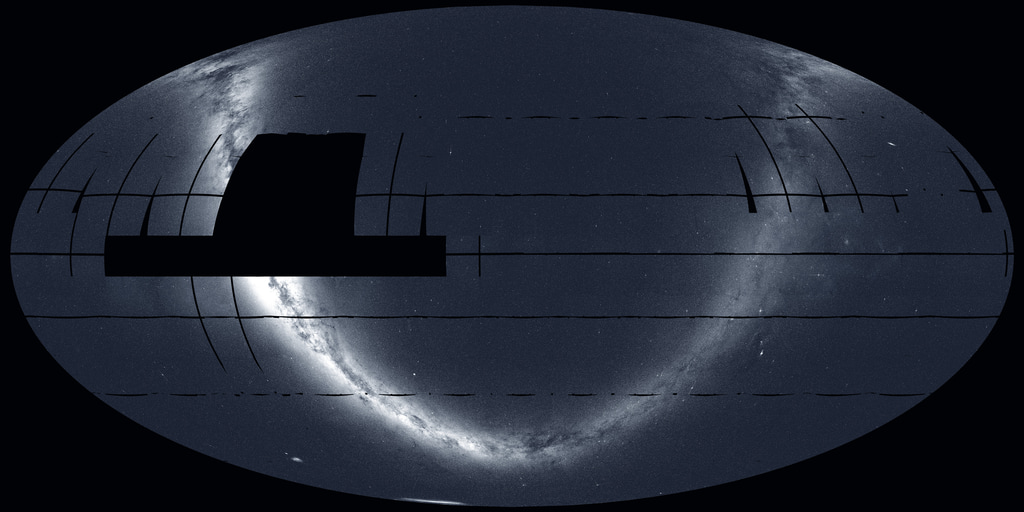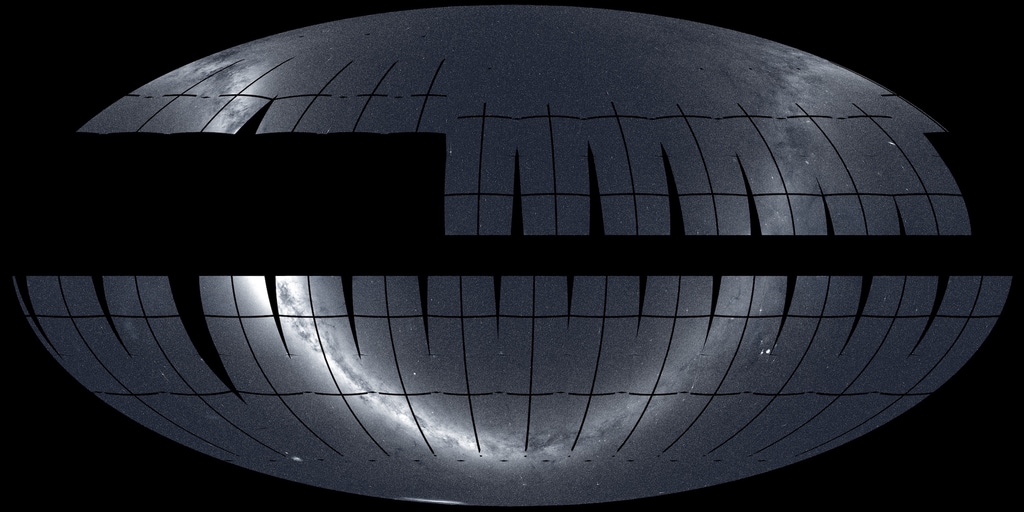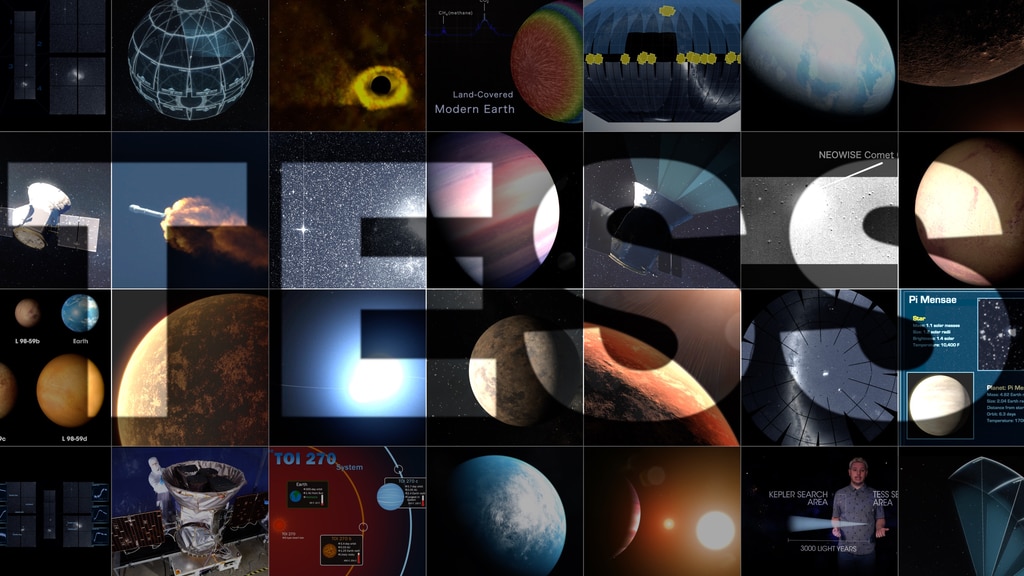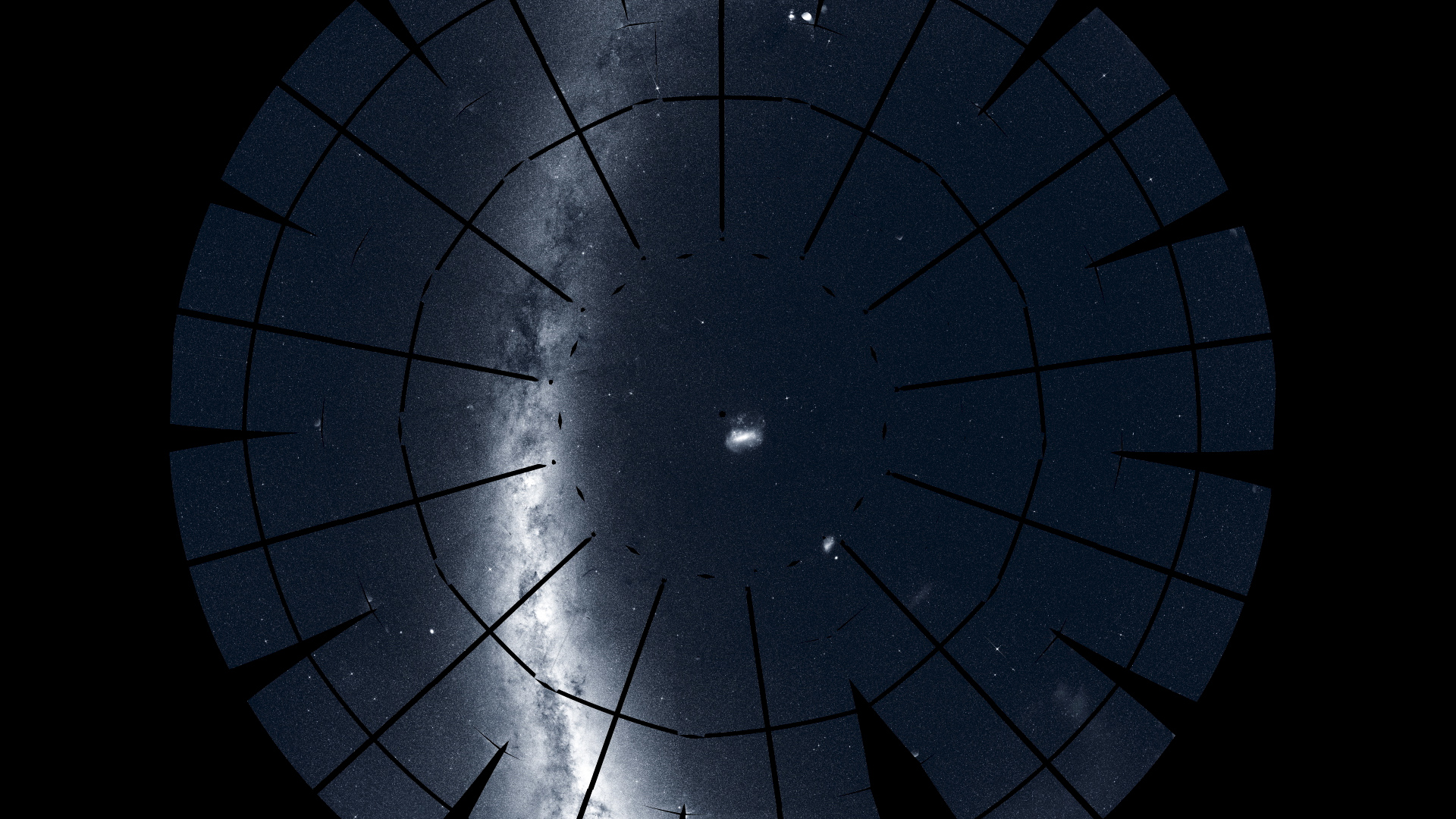TESS's Northern Sky Vista
NASA’s Transiting Exoplanet Survey Satellite (TESS) spent nearly a year imaging the northern sky in its search for worlds beyond our solar system. Explore this panorama to see what TESS has found so far.
Credit: NASA's Goddard Space Flight Center
Music: "Strolling" from Above and Below. Written and produced by Lars Leonhard
Watch this video on the NASA Goddard YouTube channel.
Complete transcript available.
Familiar stars shine, nebulae glow, and nearby galaxies tantalize in a new panorama of the northern sky assembled from 208 images from NASA’s Transiting Exoplanet Survey Satellite (TESS).
Within this starry scene, TESS has discovered several new exoplanets, and more than 600 candidates awaiting confirmation.
The northern mosaic covers less of the sky than its southern counterpart, which was imaged during the mission’s first year of operations. For about half of the northern sectors, the team decided to angle the cameras further north to minimize the impact of scattered light from Earth and the Moon. This results in an obvious gap along the mosaic’s outer edge.
TESS has now begun its extended mission, during which it will spend another year imaging the southern sky. The satellite will revisit planets discovered in its first year, discover new worlds, and fill in coverage gaps from its initial survey. Improvements to the satellite’s data collection and processing now allow TESS to return full sector images every 10 minutes and measure the brightness of thousands of stars every 20 seconds – all while continuing its previous strategy of measuring the brightness of tens of thousands of stars every two minutes.

This mosaic of the northern sky was assembled from 208 images taken by NASA’s Transiting Exoplanet Survey Satellite (TESS) during its second year of science operations, completed in July 2020. The mission split the northern sky into 13 sectors, each of which was imaged for nearly a month by the spacecraft’s four cameras. Among the many notable celestial objects visible: the glowing arc and obscuring dust clouds of the Milky Way (left), our home galaxy seen edgewise; the Andromeda galaxy (oval, center left), our nearest large galactic neighbor, located 2.5 million light-years away; and the North America Nebula (lower left), part of a stellar factory complex 1,700 light-years away. The prominent dark lines are gaps between the detectors in TESS's camera system.
Credit: NASA/MIT/TESS and Ethan Kruse (USRA)

Overlaying the figures of selected constellations helps sort out just where TESS has been observing and illustrates the scale of the panorama.
Credit: NASA/MIT/TESS and Ethan Kruse (USRA)

The locations of more than 600 candidate exoplanets identified by Sept. 15, 2020, are shown on the TESS mosaic. Astronomers are studying these targets to confirm new worlds.
Credit: NASA/MIT/TESS and Ethan Kruse (USRA)

As of Sept. 16, 2020, TESS has discovered planets around six northern stars, shown on this version of the panorama.
Credit: NASA/MIT/TESS and Ethan Kruse (USRA)

Many remarkable celestial objects appear in the TESS northern panorama. Among them: the glowing arc and obscuring dust clouds of the Milky Way (left), our home galaxy seen edgewise; the Andromeda galaxy (center left), our nearest large galactic neighbor, located 2.5 million light-years away; and the North America Nebula (lower left), part of a stellar factory complex 1,700 light-years away. Some stars, like Arcturus and Vega, are so bright they create long spike-like artifacts called saturation trails; others, like Mirfak, produce ghostly smudges as their light reflects off elements of the TESS camera system.
Credit: NASA/MIT/TESS and Ethan Kruse (USRA)

The center of the TESS northern mosaic is the sky’s north ecliptic pole and marks the center of the mission’s northern continuous viewing zone. This is where TESS sectors overlap for improved sensitivity to transits from planets with shorter and longer orbital periods. TESS discoveries here are ideal for follow-up observations with NASA’s James Webb Space Telescope, scheduled to launch in 2021. Targets in the central portion of this zone will be continuously available for observation and monitoring by Webb.
Credit: NASA/MIT/TESS and Ethan Kruse (USRA)
This animation shows how the 208 images of the TESS northern mosaic fit together. The images of each sector appear in the order TESS captured them.
Credit: NASA/MIT/TESS and Ethan Kruse (USRA)
For More Information
Credits
Please give credit for this item to:
NASA's Goddard Space Flight Center. However, individual items should be credited as indicated above.
-
Producer
- Scott Wiessinger (USRA)
-
Science writer
- Francis Reddy (University of Maryland College Park)
-
Data visualizer
- Ethan Kruse (University of Maryland College Park)
-
Visualizer
- Francis Reddy (University of Maryland College Park)
-
Narrator
- Barb Mattson (University of Maryland College Park)
-
Public affairs officer
- Claire Andreoli (NASA/GSFC)
Release date
This page was originally published on Monday, October 5, 2020.
This page was last updated on Wednesday, May 3, 2023 at 1:44 PM EDT.




